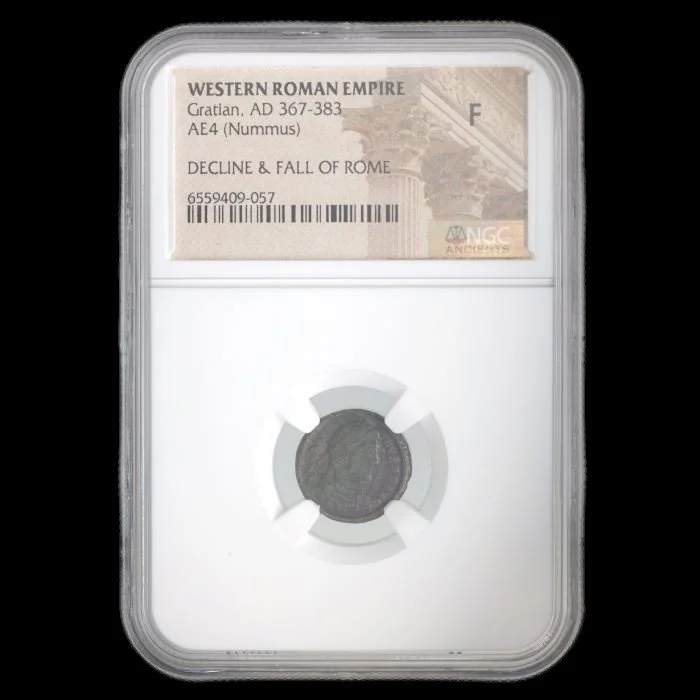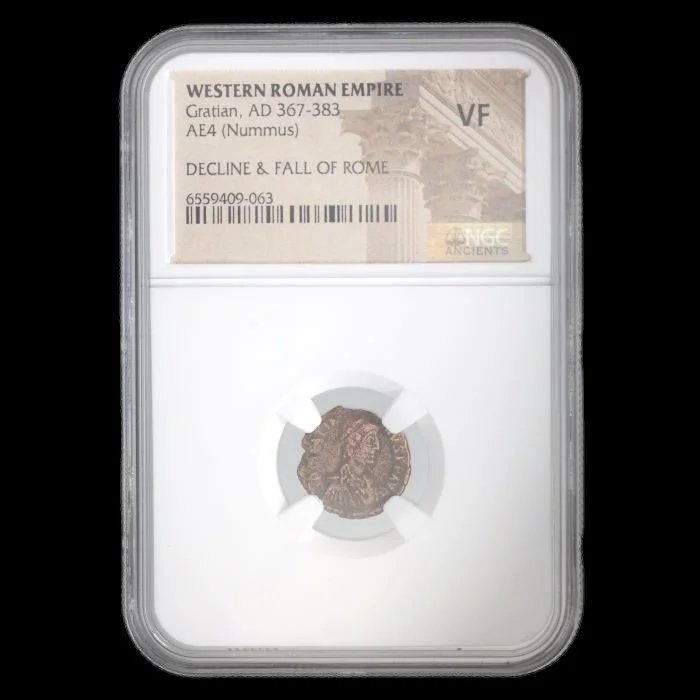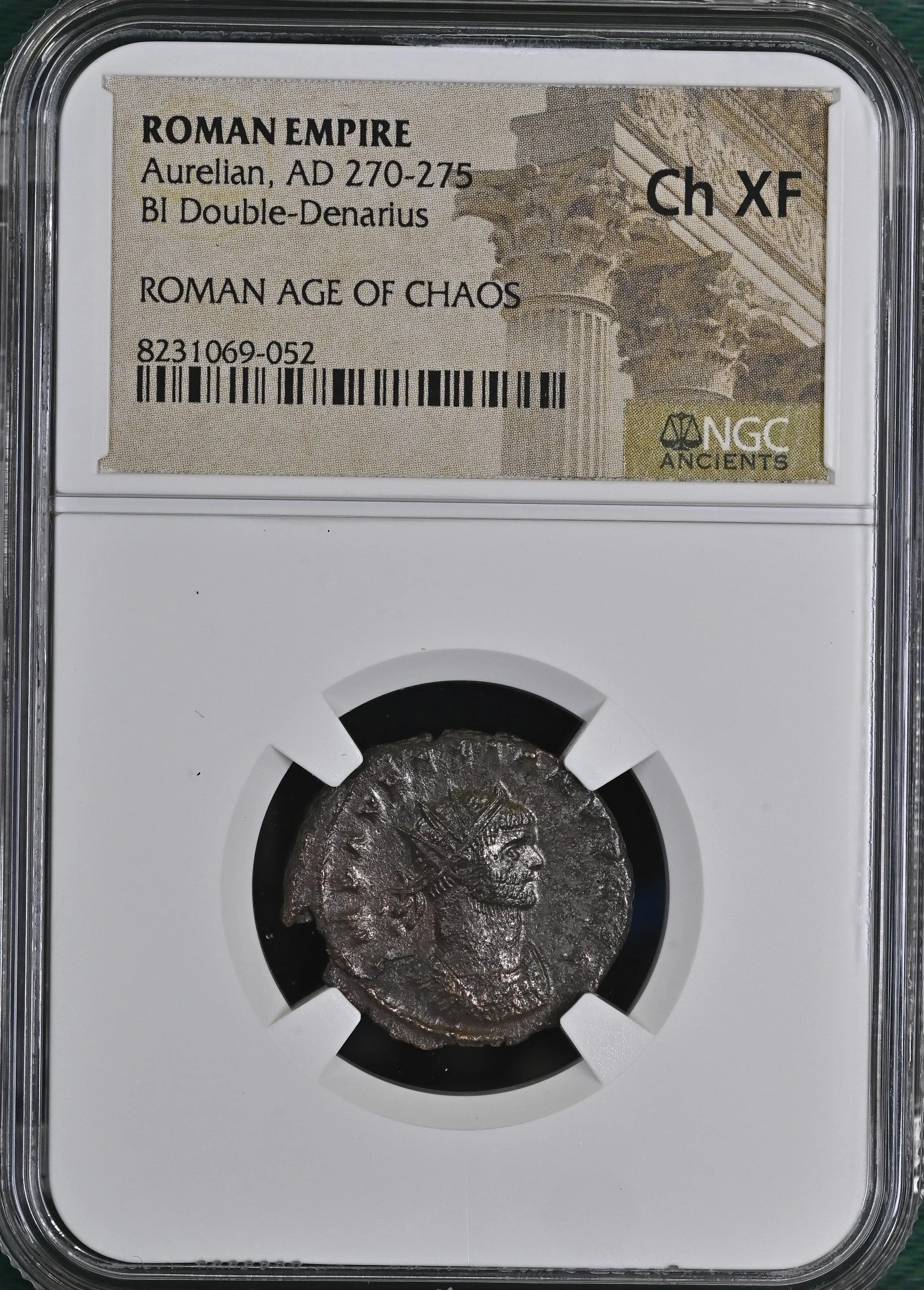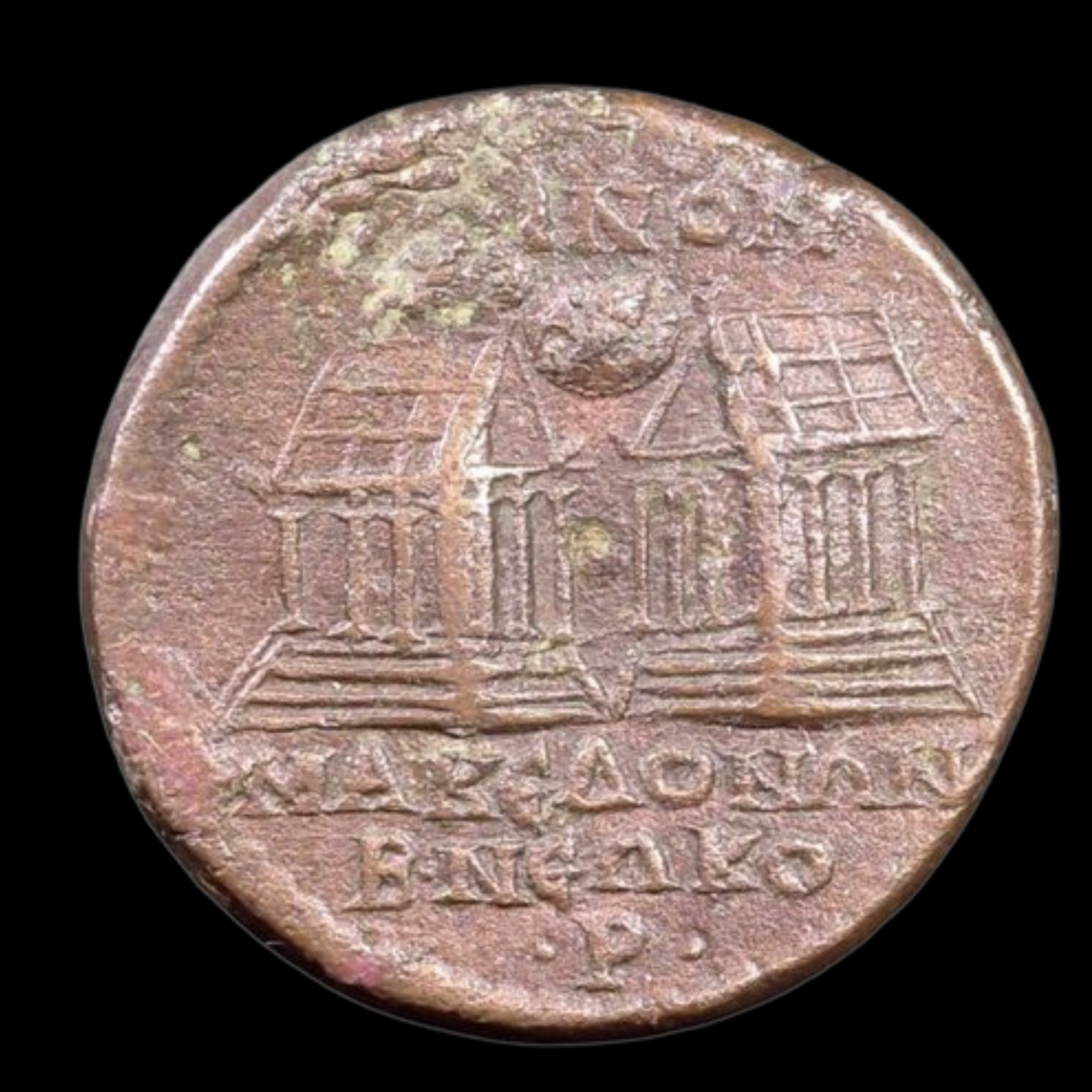 Image 1 of 4
Image 1 of 4

 Image 2 of 4
Image 2 of 4

 Image 3 of 4
Image 3 of 4

 Image 4 of 4
Image 4 of 4





Roman AE4 Of Gratian (about 1,640-1,655 years ago)
The coins shown are representative examples of the grade and type, but not the actual specimens for sale. For details on NGC’s grading standards and definitions, please refer to our NGC Grading page.
This bronze coin was issued during the reign of Emperor Gratian, who ruled the Western Roman Empire during a period of increasing pressure from Germanic tribes and internal religious tensions. This small bronze denomination would have been commonly used for everyday transactions throughout the western provinces.
Coin Description:
Front side: Profile portrait of Emperor Gratian wearing an imperial diadem and military-style clothing, with his name and titles in Latin
Back side: Likely features either personifications of Roman virtues, military symbols, or Christian religious imagery that had become standard by this time
Technical Details:
Bronze composition (copper alloy)
AE4 denomination (smallest standard bronze coin of the period)
NGC certified (Numismatic Guaranty Corporation)
Minted between 367-383 CE in various western imperial mints
Condition: Certified by NGC, specific grade not provided
Historical Significance: This coin represents the increasingly challenging final decades of the 4th century when the Western Roman Empire faced mounting external threats. Emperor Gratian, though initially successful in military campaigns, alienated traditional Roman religious factions by removing the Altar of Victory from the Senate House. His reign ended with a military revolt led by Magnus Maximus in 383 CE, foreshadowing the political instability that would contribute to the Western Empire's eventual collapse in the next century.
The coins shown are representative examples of the grade and type, but not the actual specimens for sale. For details on NGC’s grading standards and definitions, please refer to our NGC Grading page.
This bronze coin was issued during the reign of Emperor Gratian, who ruled the Western Roman Empire during a period of increasing pressure from Germanic tribes and internal religious tensions. This small bronze denomination would have been commonly used for everyday transactions throughout the western provinces.
Coin Description:
Front side: Profile portrait of Emperor Gratian wearing an imperial diadem and military-style clothing, with his name and titles in Latin
Back side: Likely features either personifications of Roman virtues, military symbols, or Christian religious imagery that had become standard by this time
Technical Details:
Bronze composition (copper alloy)
AE4 denomination (smallest standard bronze coin of the period)
NGC certified (Numismatic Guaranty Corporation)
Minted between 367-383 CE in various western imperial mints
Condition: Certified by NGC, specific grade not provided
Historical Significance: This coin represents the increasingly challenging final decades of the 4th century when the Western Roman Empire faced mounting external threats. Emperor Gratian, though initially successful in military campaigns, alienated traditional Roman religious factions by removing the Altar of Victory from the Senate House. His reign ended with a military revolt led by Magnus Maximus in 383 CE, foreshadowing the political instability that would contribute to the Western Empire's eventual collapse in the next century.


























